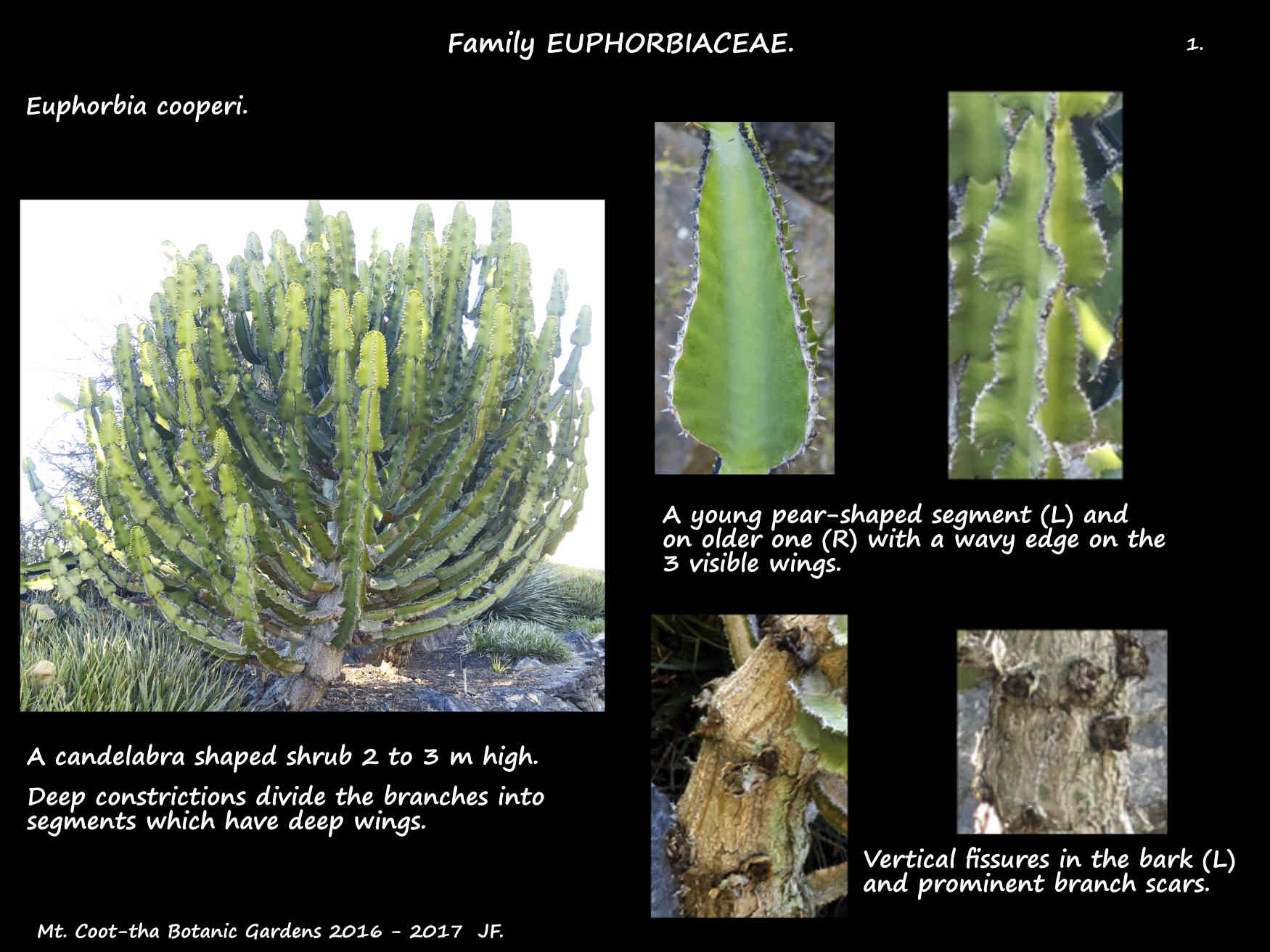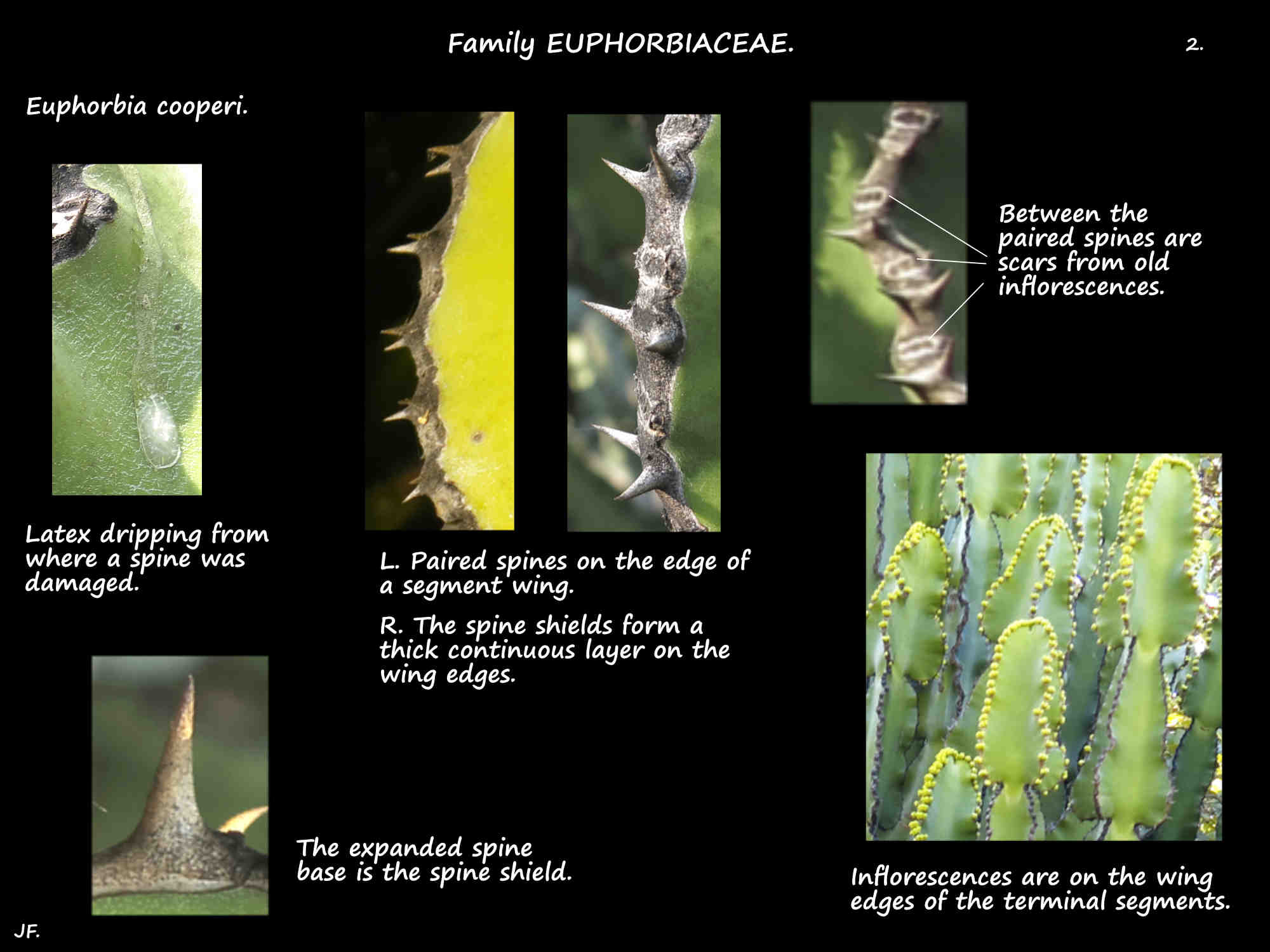Euphorbia cooperi.
The Lesser candelabra is a succulent shrub or a tree 9 to 12 m high.
The thick trunk has prominent scars from fallen branches.
The greyish-brown bark has long vertical fissures.
Parts exude a white latex when damaged.
The upwards curving branches, in whorls of up to 9 rarely branch.
The lower branches are the longest being up to 2.5 m.
This results in a plant with a slightly rounded top that resembles a candelabrum.
Deep constrictions divide the fleshy branches into segments up to 50 cm long.
The pear-shaped segments have around 4 to 6 (3 to 8) wings up to 10 cm wide.
The edges of the wings are wavy.
The leaves are on the wing edges of the terminal segments.
They are triangular, only 1 to 2 mm long and fall early.
The stipules are converted into tiny prickles.
Along the edge of the segment wings are pairs of stout spines up to 2.5 cm apart.
The spines are around 1 cm long but those on the lower branches can be longer.
The base of the spines expand to form a thick, hard spine shield.
In E. cooperi the shields of all the spines are joined forming a continuous horny edge up to
1 cm wide along the segment wing edges.
The once branched inflorescences are on the wing edges between the spines.
The densely clustered green to yellow cyathia are on very short peduncles.
The 2 round bracts at the base of the cyathia are around 5 mm long.
The cup-shaped involucre has 5 lobes around 1.5 mm long.
Between the lobes are 5 oblong, yellow nectar glands around 3 mm long.
Each cyathium has 5 male flowers around a single female flower.
The male flower consists of 1 stamen without a pedicel.
The bracteoles around it have a deeply fringed edge.
The female flower is an ovary on a pedicel which elongated up to 1 cm as the fruit matures.
There is a narrow rim representing the perianth.
The 3-chambered ovary has 3 bifid styles with their bases fused to a varying extent.
The fruit are capsules with one seed in each of the 3 chambers.
The capsule matures from green to red.
The pale grey seeds are speckled.
There are 2 or 3 varieties described with different heights, degree of branching, the shape
of the segments, the number of wings on them and the width of the spine shields.
J.F.




